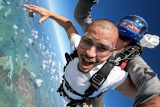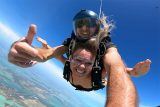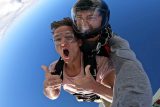What are the Physical Fitness Requirements for Skydiving?
Skydiving
Posted by: Skydive Key West
2 years ago
Skydiving is a once in a lifetime thrill. The ultimate rush. A bird’s eye view that most humans will never experience. It’s a lot more than just the most exciting ride on the planet, though. You will actually be an active participant in your jump, and the physical requirements for skydiving are something to consider before booking your tandem.
One of the frequently asked questions about skydiving requirements is about the skydiving weight limit. Is there a weight limit for skydiving? Yes – but there is a lot more to it than just the number on the scale. Another, related, popular question: Is skydiving physically demanding? Somewhat. The degree of required physical fitness for skydiving depends on a number of factors that include flexibility, strength, and health.
Read on as we unpack our brief answers to these big questions!
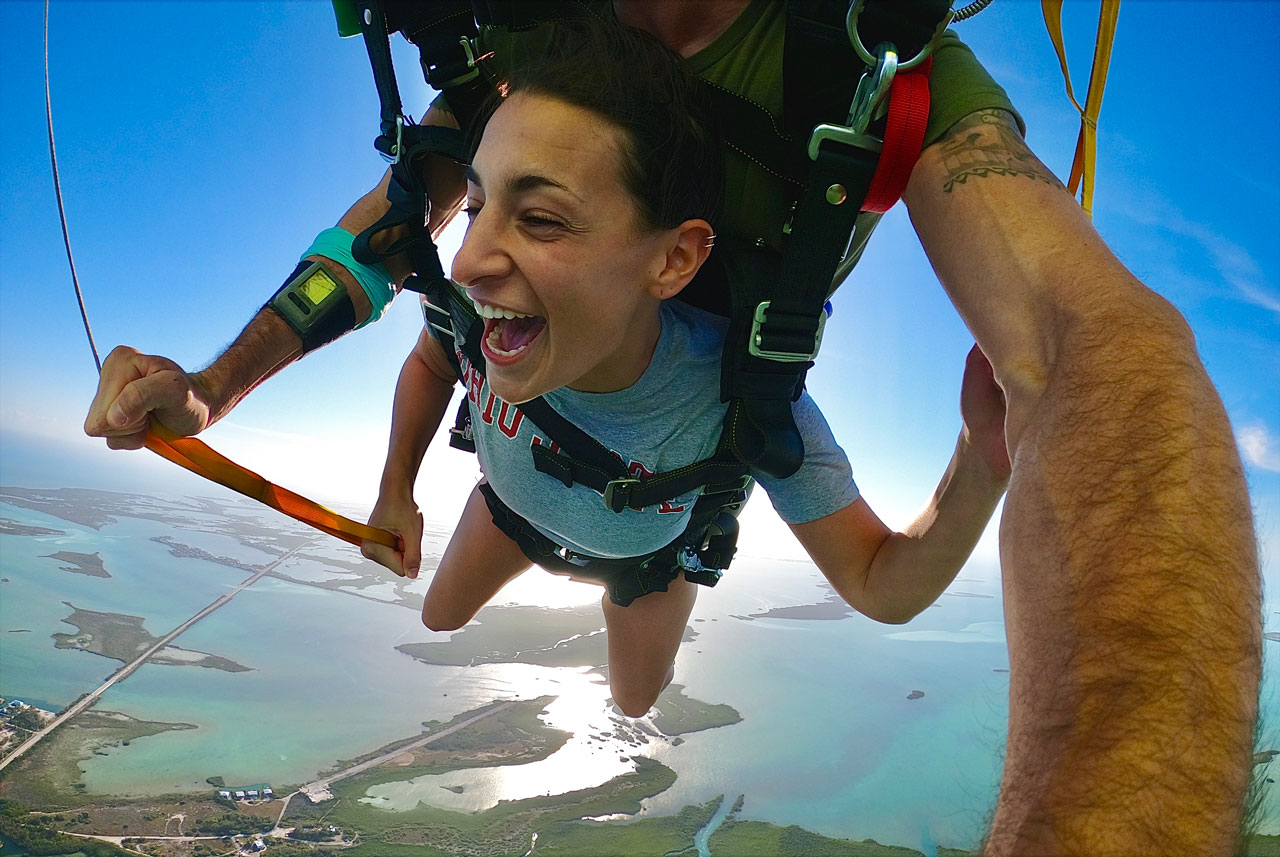
Weight Requirements
At Skydive Key West, the weight limit to make a tandem skydive is 270 pounds. A lot goes into setting this restriction, and we want to make skydiving available to as many people as possible.
The biggest concern with weight limits is the safety and performance of the skydiving equipment. The tandem harness and parachute system you will be jumping is tested to be safe for up to 500 pounds. This includes your weight, the weight of your instructor, and the weight of the gear you will both be wearing.
Safety is our top priority. We won’t put anyone in the air who would stress the lifesaving equipment beyond its limits.
Harness Fit
Height-to-weight ratio also comes into play when discussing skydiving weight limits. Someone who is 5 feet tall carries 250 pounds very differently from someone who is 6 feet tall, and that directly affects how the harness will fit.
Tandem harnesses are designed to be adjustable for different heights, weights, and body types, but there are limits to the fit on both the lower and upper end. If you are unsure about how the harness will sit on your body, we will happily help you figure out if you are good to go!
Physical Requirements:
On The Plane
The ride up to altitude can be anything from scary to relaxing, or even a mix of all the feelings! One way to keep it closer to the relaxing end of things is to do some quick mental preparation before your jump. But even if you do manage to stay calm and collected on the way up, it won’t be all lounging around and enjoying the view.
You will have to be flexible enough to climb into the plane and move around in a cramped space when it’s time to exit. You may have to crawl, crouch, or scoot around on your butt. To add to that, you will be doing at least some of that with your instructor attached to your back (which may help, or be more difficult depending on the movement!).
You will be in the cabin of the plane with other skydivers, so you will be moving in ways you don’t normally move. Being able to fully bend your hips and knees is a major bonus in skydiving!
Physical Requirements:
In the Air
The most important position in skydiving is the arch. Your instructor will give you extensive training in how to properly arch your body, but the big thing to know is that a good arch is all in the hips! You should be able to push your hips forward while keeping your shoulders and knees back, creating a sort of banana shape.
But don’t worry, you don’t have to have Elvis hips to go skydiving, just enough mobility to press your hips out further than the rest of your body. You want the air to be able to flow smoothly over your legs and chest with your hips being the lowest point. This will allow you and your instructor to be safe and stable throughout your entire freefall.
Physical Requirements:
The Landing
You’ve probably seen old videos of jumpers peacefully floating to earth under giant round jellyfish parachutes. If you watched that video through to the end, you also saw that same jumper crash straight into the ground at a velocity that makes the most spry among us clutch our knees. (Yikes!) Thankfully, parachute technology has come a long way since the age of needing boots specially designed to keep our ankles in one piece.
When you come in for landing, your biggest concern will be lifting your legs high enough to be able to slide in on your butt. This requires a certain amount of flexibility and core strength. If you want to test your ability before booking, it’s as easy as sitting in a chair and seeing if you can lift your legs straight out in front of you.
The reason for this is you don’t want your legs to get caught up underneath you and your instructor as the two of you slide in together. Just like a baseball player, we like it when you slide in safe!
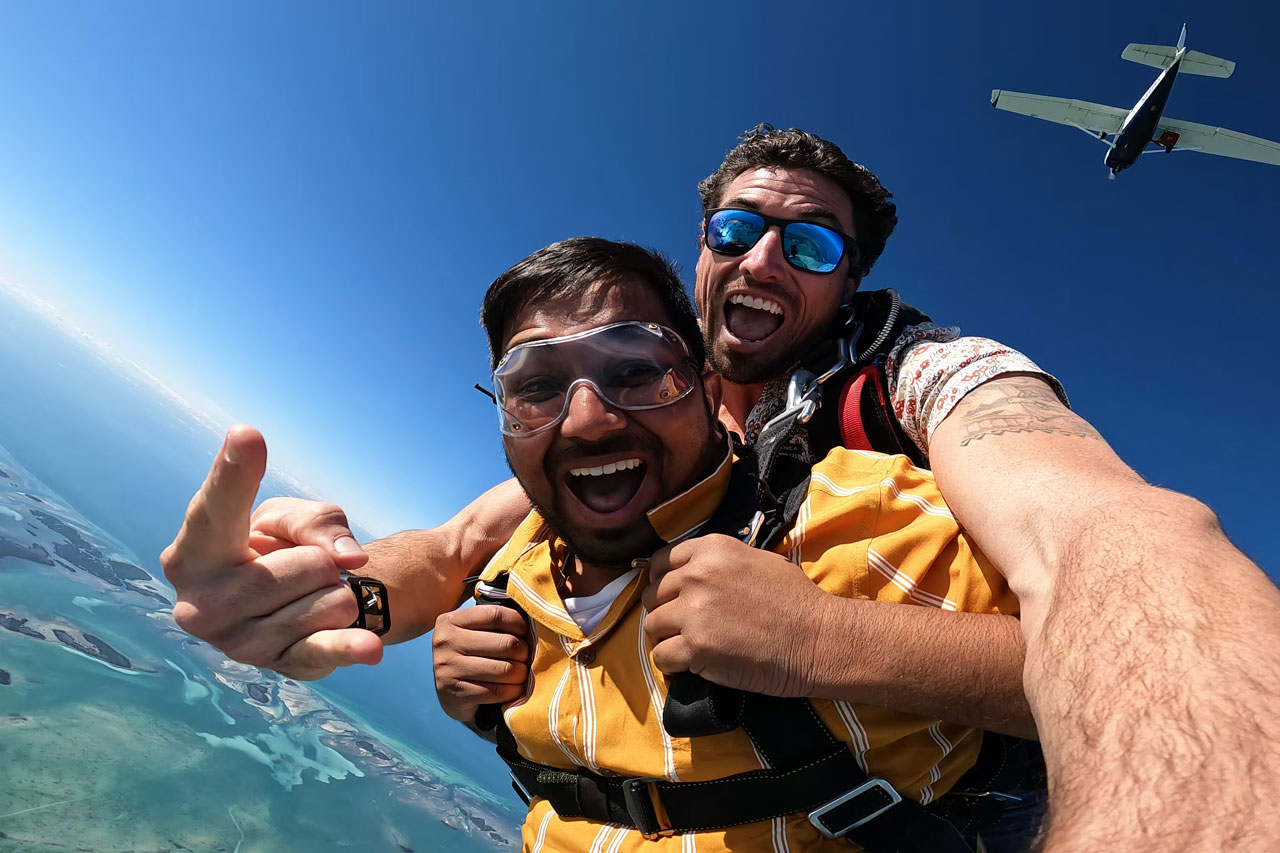
Health Conditions
We are not medical experts. In fact, the only thing we can really say we are experts at here is skydiving (phew!).
If you have any questions about whether or not a health condition would preclude you from going skydiving, you should check with your doctor before booking. Certain things like high blood pressure can be an issue, so it’s important to make sure you’re up for the jump before getting in the plane!
Bonus Question: Age
Can you be too old to skydive? No way! As long as you fit the physical requirements we discussed above, you’re never too old to fly! As a matter of fact, the oldest tandem skydiver currently on record was 103 years and 259 days old when she made her most recent jump!
Ready to test your limits? Book your tandem skydive today! Blue skies!

